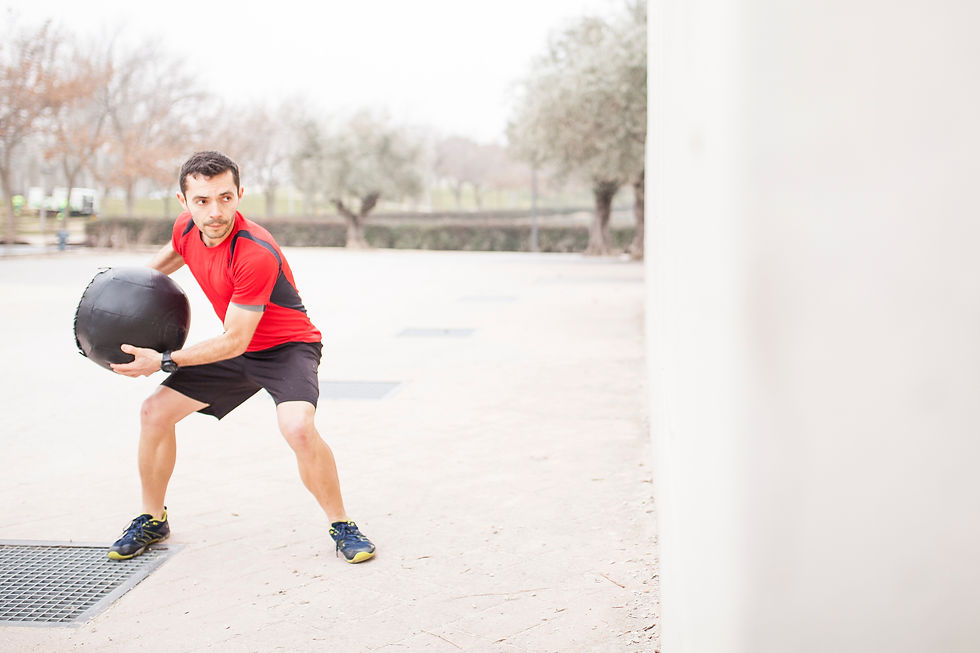Volleyball Performance: How Physical Therapy Can Help You Play Stronger, Jump Higher, and Stay Injury-Free
- Kathy Ceisel

- Oct 17
- 4 min read
By Kathy Ryan-Ceisel, PT MHS
Owner, Athletic Edge and Wellness
Overhead Throwing Specialist

🏐Volleyball is a sport built on power, precision, and agility. Every serve, spike, and dive demands explosive movement and coordination from the entire body — especially the shoulders, hips, and knees. To perform at your best and stay on the court all season long, your body needs more than just skill practice — it needs balance, strength, and recovery. That’s where physical therapy plays a key role—helping players stay strong, mobile, and ready to perform at their best.
The Demands of Volleyball on the Body
Volleyball players rely on fast-twitch muscle power and joint stability for jumping, landing, and quick directional changes. Common problem areas include:
Shoulder and rotator cuff strains from repetitive overhead movements.
Knee pain or patellar tendonitis from frequent jumping and landing.
Ankle sprains from quick lateral movements.
Low back and hip tightness that limit rotation and power.
These issues can limit a player’s ability to serve powerfully, hit consistently, or react quickly — all key components of elite volleyball performance.
🔑Key Injury Locations & Prevalence
A large study of elite male volleyball players found that nearly all (93%) reported some kind of knee, low back, or shoulder complaint over a season.
Weekly prevalence: Knee problems (~31%), low back (~21%), shoulder (~19%).
More than half of the players (58%) experienced at least one episode that substantially reduced training or performance.
In high school female volleyball players, non-traumatic shoulder pain is also common: about 40% recalled having shoulder pain unrelated to a specific injury, though fewer (33%) took time off to recover.
Among middle-school female athletes (when comparing volleyball, basketball, soccer) the majority of volleyball injuries occurred during practice rather than games. The knee was by far the most common body part injured (over 80% of volleyball injuries in that cohort), followed by ankle and shoulder. Pain/inflammation was most typical, then sprains/sub-luxations, strains/tendinopathy.
🩸Acute vs. Overuse Injuries
Many injuries are overuse in nature (gradual onset, due to repetitive stress) especially affecting the knee (patellar tendinopathy, “jumper’s knee”), shoulder (rotator cuff, impingement, tendinitis), and low back.
Acute injuries are also common in certain body parts: ankle sprains, finger/wrist injuries from contact with the ball or ground, or from poor landings.
👉Risk Factors
Preseason complaints: Players who have knee, low back, or shoulder complaints before the season are much more likely to have in-season issues.
Training load: Volume of repetitive overhead motions (serves, spikes, blocking) and jump-landing cycles are associated with shoulder, knee, and back overuse injuries.
Player age and competitive level: Higher levels (high school, university, pro) tend to show more frequent or severe overuse complaints. Years of playing also increase risk of shoulder pain.
🎯How Physical Therapy Boosts Volleyball Performance
Physical therapy isn’t only for recovering from injuries — it’s also a proactive way to enhance athletic performance and reduce future risk.
Here’s how:
1. Movement Assessments and Screening
A PT can identify mobility restrictions, muscle imbalances, or movement inefficiencies that affect your jump height, hitting velocity, or reaction time. By improving movement mechanics, players can generate more power safely.
2. Strength and Stability Training
Volleyball requires a strong foundation from the ground up. Targeted strength programs focus on:
Core and hip stability for efficient jumping and landing mechanics.
Shoulder strength and scapular control for powerful serves and spikes.
Knee and ankle stability to absorb impact and prevent sprains.
Exercises for glute strength, single-leg stability, scapular control, balanced push/pull shoulder work.
Mobility Work
Tight hips or shoulders can reduce range of motion and performance. Physical therapy helps restore flexibility through hands-on techniques, guided stretching, and mobility drills tailored to demands of the sport. Ensuring joints can move through the ranges needed (shoulder abduction/rotation, hip flexion/extension, ankle dorsiflexion) to avoid compensation that stresses other structures.
4. Load Management
Modifying training loads (volume, intensity, rest) to avoid overuse, esp. for hitters, servers, blockers who do many overhead movements. Periodizing jumps, limiting overhead reps in practice, integrating rest days, gradual increase.
Technique & Biomechanics Optimization
Teaching and reinforcing movement patterns that reduce stress: safe landing, proper arm swing mechanics, controlled deceleration. Practice of jump-land drills, ensuring knees track over feet, teaching shoulder mechanics for spike/serve, using video feedback.
Injury Recovery and Prevention
When injuries do occur, PTs guide athletes safely back to play through individualized rehab programs that rebuild strength, balance, and confidence — helping athletes return stronger than before.
Sport-Specific Training
Physical therapists with sports specialization design drills that mimic volleyball actions — like jumping, lunging, and overhead hitting — to ensure the athlete’s training directly transfers to game performance.
The Bottom Line
Whether you’re a competitive volleyball player or just love the game, physical therapy can be a game-changer. It helps you move more efficiently, perform at your peak, and stay healthy throughout the season.
Don’t wait until pain sidelines you — take a proactive approach to your performance and longevity.

If you’re dealing with a volleyball-related injury or want to improve your strength and movement to prevent one, Athletic Edge & Wellness can help. Our physical therapy team specializes in helping volleyball players recover safely, enhance performance, and return to the court stronger than ever. 💪
📞 Contact us today today at 224-505-3343 to schedule your assessment and take the next step toward a healthier, more powerful game.







Comments